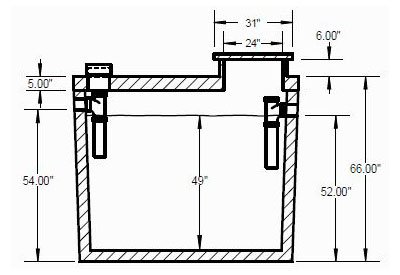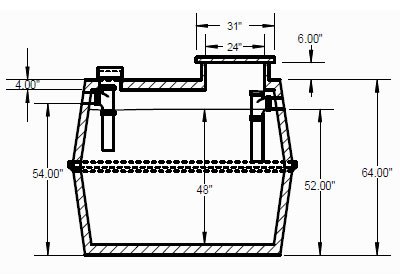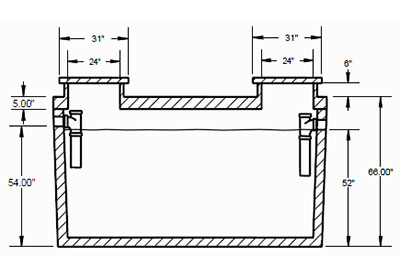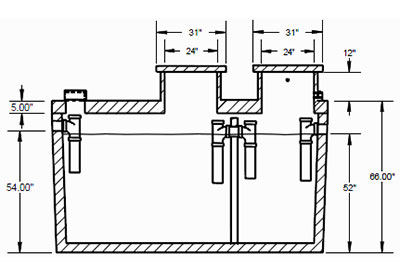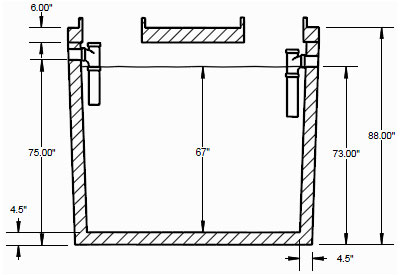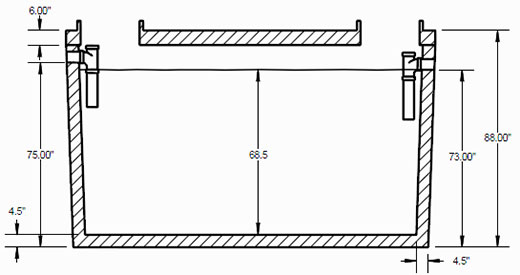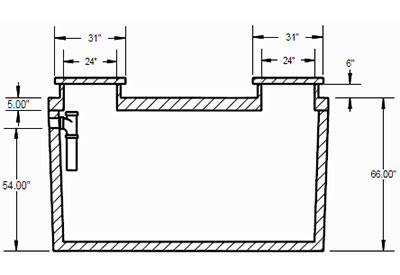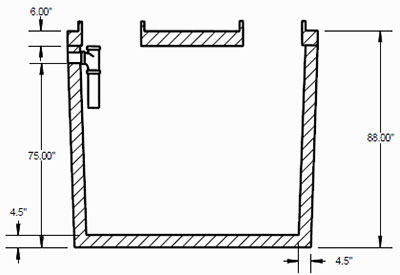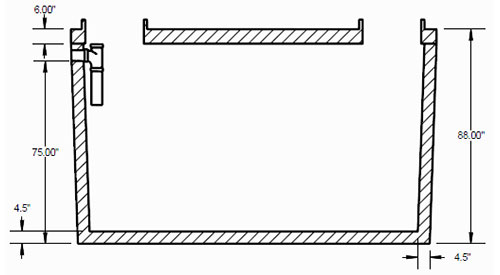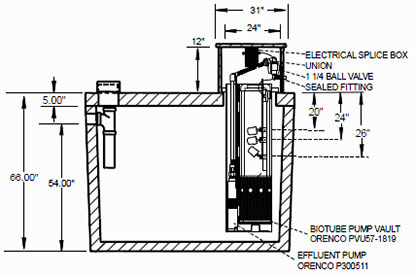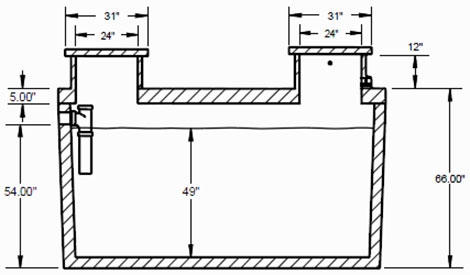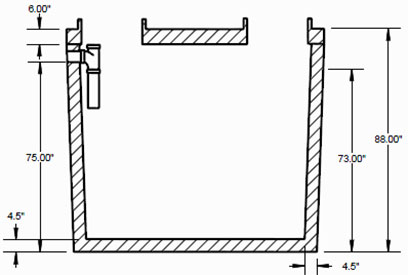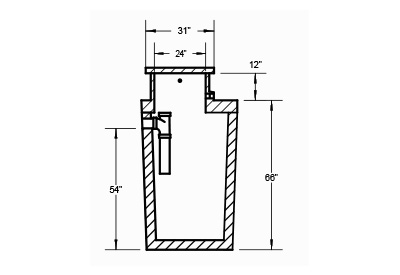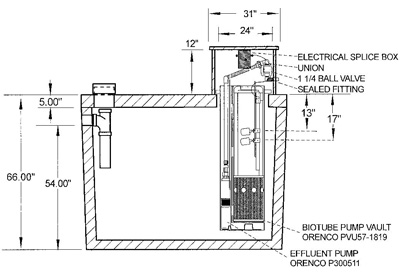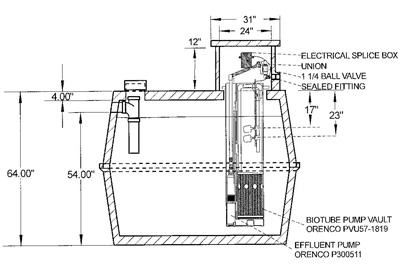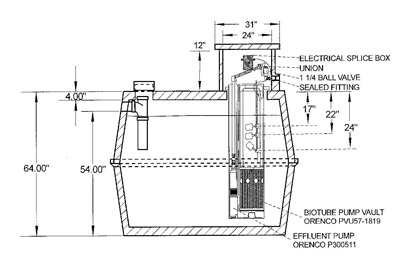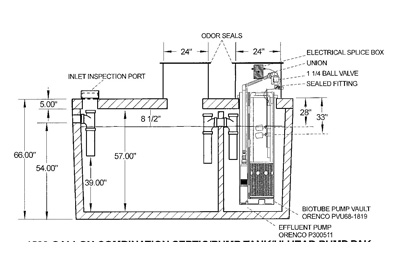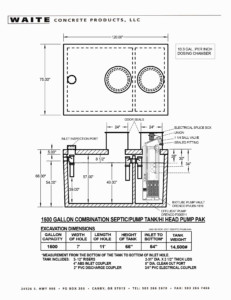The septic tank itself can range in size from a standard of 1,000 gallons, up to 3,000 gallons. A four bedroom house must have a minimum of a 1000 gallon tank. Five bedrooms or more in a home require the tank size of 1500 gallons.
Regardless of their size, there are 5 basic functions of septic tanks:
- receives wastewater from the house
- separates solids from liquids
- stores solids
- decomposes solids
- sends wastewater to the drain field
Please refer to our Tank Installation page for specific information regarding excavation recommendations, as well as size-specific information on anti-buoyancy for all sizes of the tanks we carry.
HOLDING TANKS – Holding tanks are used where suitable soil for drain fields are not present. Most holding tank systems consist of one tank that permanently hold waste and should be pumped out regularly. The frequency of pumping out holding tanks will depend on the amount of water used within a household. An average household (2-4 people) will require a pump-out every 2 to 5 months.
DOSING SEPTIC TANKS – A dosing tank (or pump tank) is an integral part of any pumped septic system. The tank contains one or more effluent sewage pumps. Float control switches inside tank turn the pump on and off. The pump delivers a “dose” of water to the absorption field. Dosing tanks require a high water alarm to notify the owner in the case of a pump failure or full tank.

